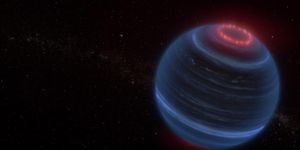The Cause of Giant Rogue Waves is Revealed
Giant rogue waves are far higher than other waves surrounding them, and they can appear out of nowhere to wreak havoc on ships and shorelines. A new study has shown that the formation of colossal rogue waves is driven by wind, and they happen more often than scientists thought. This study, which has been reported in Physical Review Letters, could improve models that predict the occurrence of these waves.
"Rogue waves are colossal—twice as high as neighboring waves—that appear seemingly out of nowhere," said study leader Professor Alessandro Toffoli.
While it has been thought that strong winds boost the formation of giant rogue waves, this theory has only been modeled with computers. In this study, researchers went on an expedition to the waters circling Antarctica at the most southern reaches of the planet. They used stereo camera technology on the South African icebreaker SA Agulhas II to create three-dimensional, graphical images of ocean waves.
Rare observations of remote waves were captured with this effort. Sequential images were taken so that they wavy surface of the ocean and the dynamics of its waves could be surveyed from different directions. The investigators determined that strong wind forces promote rogue wave formation, in chaotic waveform patterns. This work has confirmed modeling studies with real observations.
"Antarctica's choppy seas and wild winds can cause large waves to self amplify, resulting in rogue wave frequency scientists had theorized for years, but could not yet verify in the ocean," said Toffoli. "Our observations now show that unique sea conditions with rogue waves arise during the young stage of waves, when they are most responsive to wind. This suggests wind parameters are the missing link," added Toffoli.
Wind can influence young waves so they become longer, higher, and faster. As this self-amplification is happening to a wave, it grows disproportionately at its neighbor's expense.
"We show young waves display signs of self-amplifying and more likelihood of becoming rogue, because of the wind. We recorded waves twice as high as their neighbors once every six hours," Toffoli said.
This research has emphasized the importance of including wind dynamics when developing forecasting models for predicting rouge waves, noted Toffoli.









